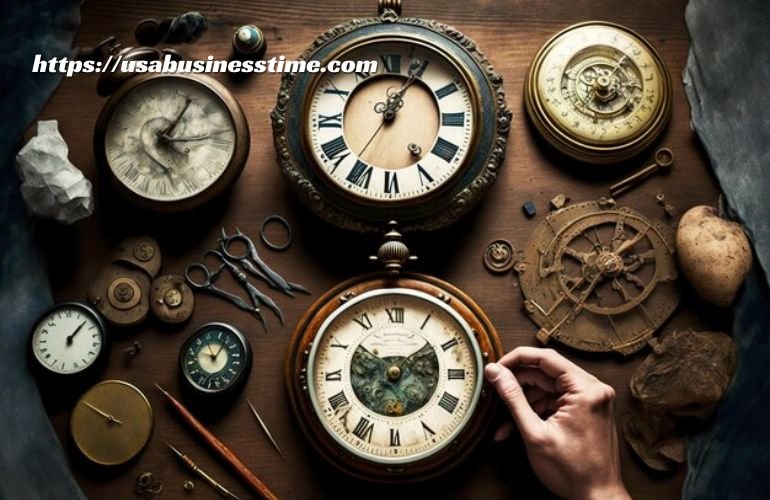The Reproduction Waaghurclock stands as a symbol of timeless artistry and precision. Rooted in the rich tradition of Dutch clockmaking, it carries centuries of history and craftsmanship. Its intricate design and mechanical ingenuity reflect the pinnacle of horological expertise.
Table of Contents
Design and Craftsmanship
The Waaghurclock stands out for its intricate design and impeccable craftsmanship. Its architectural structure reflects an era when functionality and aesthetics seamlessly blended. The use of fine wood and metal in its construction exemplifies a commitment to durability and elegance.
The pendulum and weight systems are key elements of its design. These components, carefully calibrated, ensure precise timekeeping while adding to its visual charm. The clock face, adorned with unique numerical markers, balances practicality with artistic flair. Every element, from the font style to the arrangement, is designed to complement the overall structure.

Cabinet construction is another highlight. Crafted from high-quality wood, the cabinets not only protect the clock’s internal mechanisms but also serve as a decorative feature. Wood selection and treatment processes enhance both the appearance and longevity of these pieces. The grain, color, and finish are thoughtfully chosen to maintain authenticity while showcasing craftsmanship.
The combination of traditional techniques and timeless materials gives the Waaghurclock its distinctive appeal. Each detail speaks of a dedication to artistry and functionality, making it a cherished object for enthusiasts and collectors alike.
The Art of Reproduction Waaghurclocks
Reproduction Waaghurclocks capture the spirit of historical craftsmanship while making it accessible to a modern audience. These pieces replicate the precision, design, and artistry of original models using traditional methods and modern advancements.
The process of creating a reproduction involves meticulous attention to detail. Craftsmen work with authentic materials such as carefully selected wood and metals, ensuring every element aligns with the original designs. This dedication preserves the character and charm that define the Waaghurclock.
Modern reproductions feature distinctive updates that enhance functionality without compromising historical accuracy. Improved internal mechanisms provide consistent timekeeping while maintaining the traditional pendulum and weight-driven movement. These refinements respect the heritage of the original designs while adapting to contemporary expectations of reliability.
The visual appeal of reproduction models is another defining feature. Clock faces are recreated with the same level of artistry as their historical counterparts, with intricate detailing in the numerical markers and hands. Cabinet designs follow the same construction principles, balancing aesthetics with durability.
Reproductions also honor the heritage of craftsmanship by incorporating time-honored techniques. Carving, painting, and finishing processes are executed with care, ensuring the final product embodies the legacy of the Waaghurclock. These models serve as both functional timepieces and artistic tributes, allowing collectors and enthusiasts to celebrate this unique piece of history.
Preserving a Legacy
The reproduction of Waaghurclocks plays an important role in safeguarding the heritage of traditional clockmaking. By recreating these iconic timepieces, the essence of historical design and craftsmanship is passed on to future generations. This process helps keep alive the skills and artistry that were once the hallmark of master clockmakers.
Crafting reproductions requires a deep commitment to traditional techniques. From hand-carving wood to precise metalworking, artisans follow methods that mirror the practices of the original creators. This dedication not only produces faithful reproductions but also serves as a way to document and maintain these techniques.
Reproductions also help in making historical designs more accessible. Original Waaghurclocks are rare and often preserved in museums or private collections. High-quality reproductions allow enthusiasts to experience the charm and precision of these timepieces without compromising the preservation of originals.
While recreating historical designs, artisans often face challenges in sourcing authentic materials and maintaining accuracy in craftsmanship. Wood species, metal components, and decorative elements must all align with traditional standards, requiring both expertise and patience.
Through these efforts, the Waaghurclock continues to inspire appreciation for traditional craftsmanship. Reproductions bridge the gap between history and modernity, allowing people to connect with the artistry of the past while celebrating its relevance in the present. This approach ensures that the legacy of the Waaghurclock remains a vibrant part of cultural heritage.
Incorporating Waaghurclocks into Modern Life
Waaghurclocks seamlessly blend history and design, making them a versatile choice for various interior styles. Their classic elegance and mechanical charm add depth and character to both traditional and contemporary spaces.

When placing a Waaghurclock in a home, location plays a key role in highlighting its features. In living rooms, it can serve as a focal point, complementing furniture and decor while subtly drawing attention. In dining areas or libraries, it adds a sense of timeless sophistication and balance.
Modern reproductions of the Waaghurclock offer flexibility, allowing them to adapt to a wide range of interior themes. From minimalist designs to more ornate setups, the clock’s aesthetic versatility enhances its appeal. Its rich wood tones and intricate details create warmth, while the precise craftsmanship reflects a commitment to quality.
In addition to aesthetics, these clocks contribute to the ambiance of a space. The rhythmic movement of the pendulum and the gentle sound of the chimes create a soothing environment. This sensory connection elevates the overall atmosphere of a room, transforming it into a more inviting and harmonious space.
Waaghurclocks also fit well into offices and study spaces, where their historical significance and mechanical precision can inspire productivity and creativity. Whether displayed prominently or integrated subtly, they bring a layer of refinement that enriches the environment.
By incorporating Waaghurclocks thoughtfully, homeowners and designers alike celebrate the enduring artistry of these timepieces, making them an integral part of contemporary living while honoring their storied past.
Maintenance and Care
Proper maintenance is essential to keep a Waaghurclock in excellent working condition. While these timepieces are designed to be durable, regular upkeep helps preserve their mechanical precision and aesthetic appeal.
Cleaning
Dust and grime can accumulate over time, affecting both the exterior and the internal mechanisms. Gently clean the clock’s wooden surfaces with a soft, dry cloth to prevent scratches or damage. For metal components, use a non-abrasive cleaner suitable for delicate finishes. Avoid harsh chemicals, as they may harm the materials.
Winding and Adjusting
The pendulum and weight-driven mechanism require periodic winding to function accurately. Follow the manufacturer’s guidelines or instructions specific to your model to wind the clock correctly. Avoid over-tightening, as it may strain the mechanism. Adjust the pendulum length as needed to maintain precise timekeeping, making small changes to avoid disrupting the balance.
Lubrication
Moving parts within the clock mechanism need occasional lubrication to reduce friction and wear. Use high-quality clock oil specifically designed for timepieces. Apply sparingly, focusing on pivot points and other areas prone to movement. Over-lubrication can attract dust, leading to buildup and eventual damage.
Professional Servicing
While basic cleaning and winding can be managed at home, periodic servicing by a qualified professional is recommended. A skilled clockmaker can inspect the internal components, replace worn parts, and recalibrate the mechanism to ensure accurate performance. Routine servicing also helps identify and address potential issues before they become serious.
Avoiding Environmental Damage
Placement plays a key role in the longevity of the Waaghurclock. Keep it away from direct sunlight, which can fade wooden surfaces and weaken adhesives. Avoid areas with high humidity or sudden temperature changes, as these conditions may warp the wood or affect the metal components.
Regular Observation
Monitor the clock’s performance and sound for any irregularities. Unusual noises, time discrepancies, or difficulty in winding may indicate a need for repair. Prompt attention to such signs helps avoid more extensive damage.
By following these care practices, a Waaghurclock can remain a functional and elegant addition to any space for generations. Proper attention to its mechanical and aesthetic details ensures its timeless charm continues to shine.
Collecting and Value Assessment
Waaghurclocks hold both historical and aesthetic value, making them a fascinating choice for collectors. Whether original or reproduction models, these timepieces represent a blend of artistry and mechanical ingenuity that appeals to enthusiasts worldwide.

Comparing Original and Reproduction Models
Original Waaghurclocks are rare artifacts of a bygone era, often commanding high prices due to their scarcity and historical significance. They feature unique characteristics, such as handcrafted details and patina developed over time. Reproduction models, while more accessible, offer the same design essence with modern craftsmanship. They are ideal for those who appreciate the artistry but seek practicality in maintenance and cost.
Authenticating Timepieces
For original models, authentication is a key consideration. Examining marks of craftsmanship, signs of aging, and historical documentation helps establish provenance. Consulting with experts or appraisers can provide insight into a clock’s authenticity and historical background. For reproductions, looking for trademarks of skilled craftsmanship, high-quality materials, and faithful adherence to traditional designs ensures a piece of enduring value.
Investing in a Waaghurclock
Original Waaghurclocks are considered collectible investments, often increasing in value over time. Their rarity and association with the history of Dutch clockmaking contribute to their appeal among collectors. Reproduction models, while not typically viewed as financial investments, hold emotional and artistic value. They allow owners to connect with a rich tradition while enhancing their living spaces.
Factors Influencing Value
The value of a Waaghurclock, whether original or reproduction, depends on several factors. These include the quality of materials, the accuracy of the mechanism, the level of craftsmanship, and the clock’s condition. For collectors, rarity and historical significance are particularly important when assessing worth.
Building a Collection
Collectors often focus on building a diverse range of pieces, including original and reproduction models. This approach highlights the evolution of craftsmanship and design while allowing for varied display options. Careful selection of each piece ensures a collection that reflects personal taste and appreciation for this unique art form.
A Waaghurclock is more than just a timepiece; it is a connection to history and a symbol of enduring craftsmanship. Whether acquiring an original or a reproduction, owners become stewards of a tradition that continues to inspire admiration.
Conclusion
The Waaghurclock represents a harmonious blend of history, craftsmanship, and timeless design. Whether through original masterpieces or faithful reproductions, it continues to fascinate and inspire. Its intricate details, mechanical precision, and aesthetic charm have transcended generations, making it a cherished addition to homes and collections alike. By preserving its legacy and embracing its artistry, the Waaghurclock remains a symbol of both tradition and elegance, holding a lasting place in the hearts of enthusiasts and admirers.











